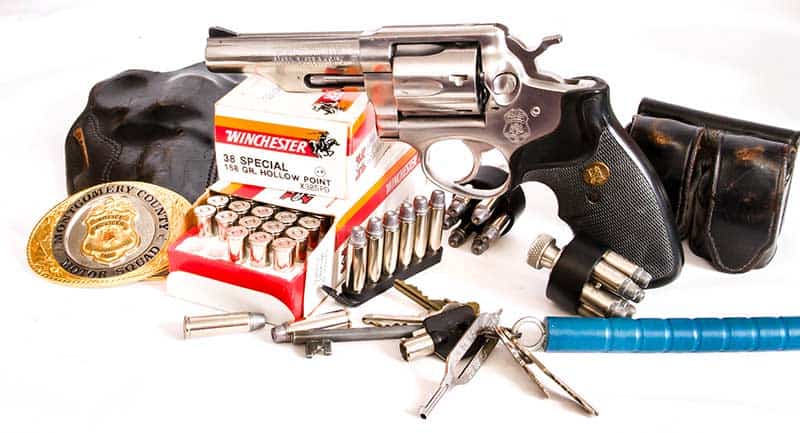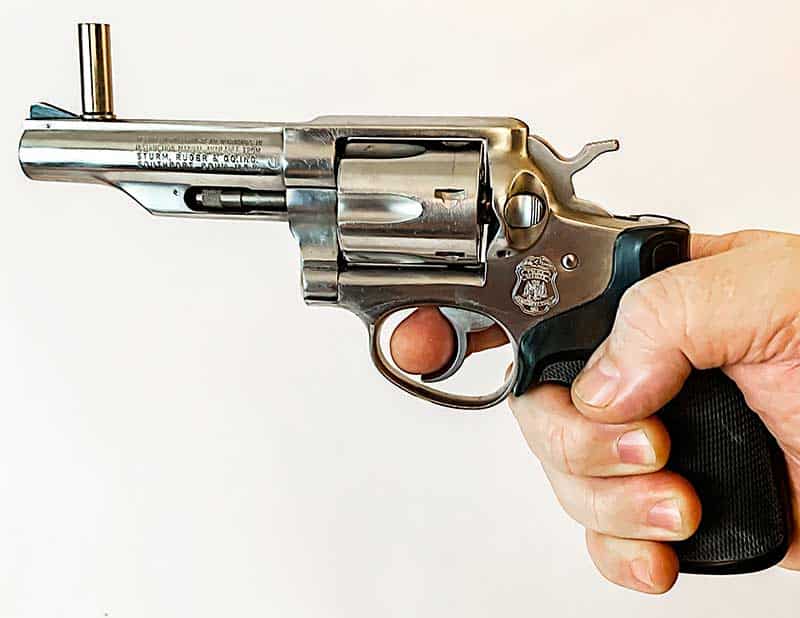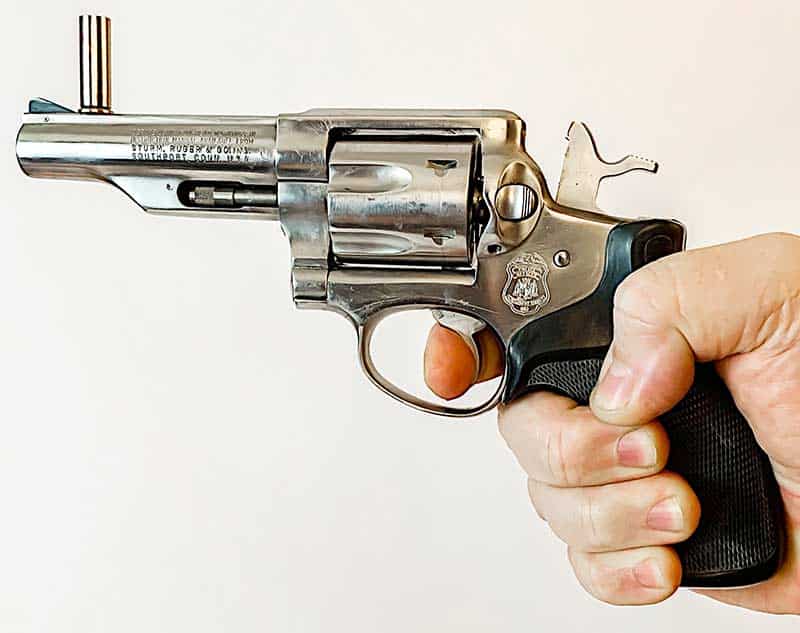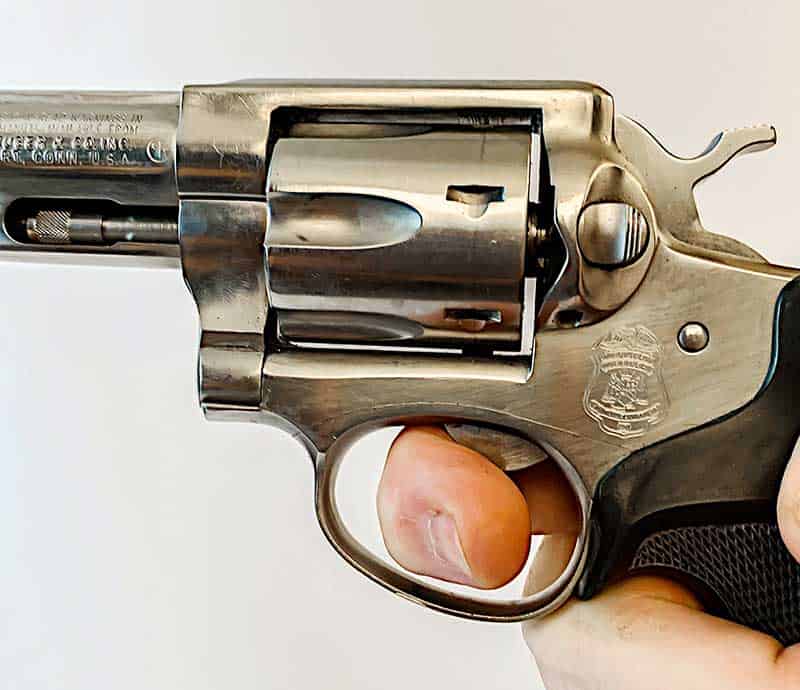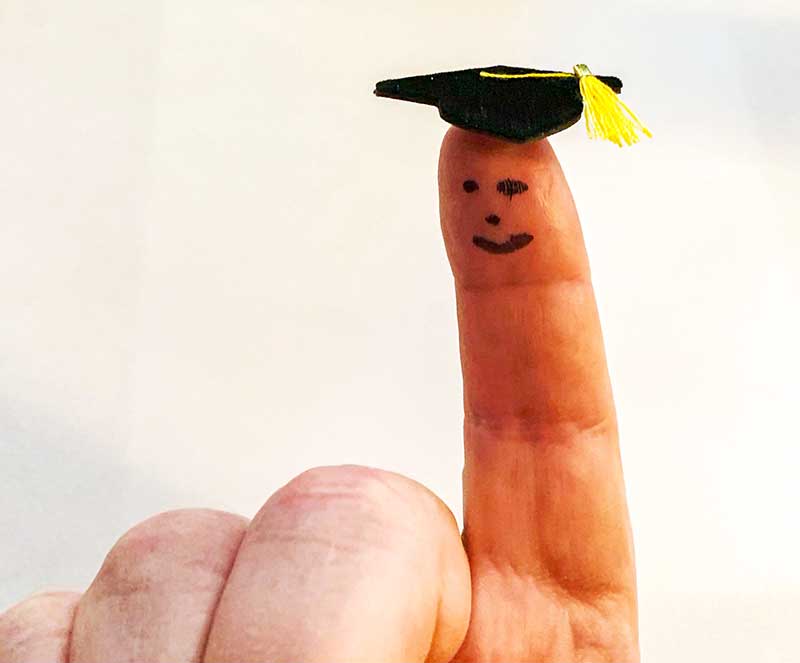Double-Action Revolver Shooting
The Key To Mastering Trigger Technique
Admittedly, the Single-Action (SA) revolver is my favorite because of its strength, simplicity and the sentimentality I hold for it. Add safety and straight shooter to the mix, and you can see why I love them. However, when it comes to shooting, either long guns, pistols, or revolvers, the double-action (DA) revolver is the best gun to teach us trigger control.
Once you’ve mastered DA shooting, you’re well on your way to being a fine, all-around shooter, no matter what gun you shoot! Besides, why wouldn’t you shoot a DA revolver the way it was intended to shoot?
The Basics
Trigger control simply means making the gun fire after sight alignment and sight picture have been established. Some say you should be surprised when the gun goes off, while others want to know precisely when the gun will go off. Me? I’m stuck somewhere in the middle. When I start my trigger press, I’ve already established my sight alignment (the front sight is centered and leveled between the rear sight notch) and have transitioned to sight picture (my front sight is on target to what I want to hit).
While maintaining sight picture, my trigger finger starts its slow, steady press. Through repetition, I have some idea of when the hammer should fall, but I’m not thinking about that. I’m concentrating on my front sight, trying to push the front sight through my point of aim, as my trigger finger maintains its slow, steady press. When the gun does fire, follow-through is automatic because of my intense concentration level.
Shooting DA is harder than shooting SA, but once you’ve mastered the longer DA pull, your educated trigger finger will be able to master the triggers of any gun. With more practice, your DA trigger press will begin with sight alignment, with the gun firing as soon as sight picture is made, as in combat shooting. It will become one continuous, fluid motion. A complex task, it is obtainable with practice.
Educating & Strengthening Your Trigger Finger
As a rookie cop, I had never fired a handgun before. Sure, I was well versed in rifles and shotguns, and got my start with a Daisy 1894 reproduction BB gun at the age of six. So my trigger finger was basically educated, maybe just at the elementary level, but it helped. We had six weeks of classroom before we ever picked up our revolvers. The range instructors wisely suggested we come down to the range and do plenty of dry-fire trigger pulls, familiarizing ourselves with DA pulls, and to strengthen our trigger fingers and forearms. Also, it toughened our trigger fingers to prevent blisters.
We were taught how to balance a spent brass case on top of our barrel to see how many times we could press the trigger without the brass falling off. This “dry-fire” practice drill really taught the basics of maintaining sight alignment and sight picture while pressing the long DA trigger pull. It’s a drill I still occasionally do to this day.
Some did take advantage of dry fire practice opportunities, and some didn’t. Those that didn’t regretted it when rotations started, and we had a full week of shooting ahead of us. It was nothing to shoot 500–700 rounds a day.
Attitude
Being raw recruits, we didn’t have attitudes. If you did, you were gone. We didn’t complain about trigger pulls, sights being off, or any other maladies. “Just shoot the gun and improvise,” we were told. My own Ruger Service-Six shot about 2″ right at 25 yards. When I brought this up, the instructor, a well-known PPC champion shooter shot it three times, confirming my observation and simply said, “aim to the left” for my fixed sighted revolver. No fuss, no muss!
I carry this attitude with me today — just shoot and improvise when you discover something is off. Since we carried revolvers my first five years, we were taught to shoot combat style, DA only. You’ll never master the handgun; it takes constant practice and repetition to maintain top efficiency. You need to practice, to maintain proficiency.
Final Word
Once you’ve mastered the long, heavy trigger pull of a DA revolver, transitioning to another action, or gun type is easy. Your newly educated and trained trigger finger will be able to notice and recognize the many different trigger “feels” and know how to respond to them.
Anything from a spongy polymer-framed, striker-fired pistol, to a rough lever action rifle, or an SA revolver trigger set at 1.5 lbs., your trigger finger will no longer let you down once you’ve established sight picture and start your trigger press with follow through. When you get down to it — just shoot! The more you shoot, the more educated your trigger finger will become by becoming familiar with the gun.
One thing’s for certain, once the DA trigger press is mastered, all other triggers will be easier to shoot with. I wouldn’t pull your leg …
